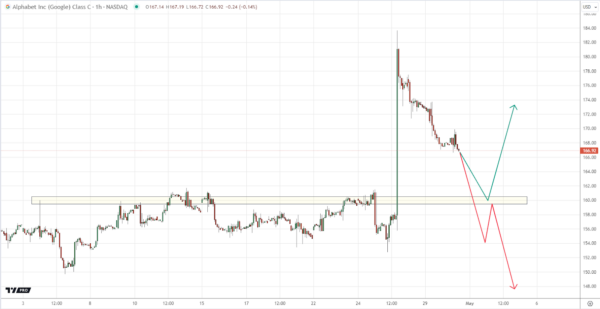Information
How Does Helmet Use Or Non-Use Affect A Bicycle Accident Case?

If you are involved in a bicycle accident, whether or not you were wearing a helmet can significantly impact your accident case and potential injury claim. Here is what you should know about helmet use and how it can affect the outcome of a bicycle accident case.
Why Bicycle Helmets Matter For Safety
Before analyzing the legal implications, it is important to know why bicyclists should wear helmets in the first place. So here’s a review of some key statistics and facts demonstrating the effective safety benefits of wearing helmets:Statistic Details Percent reduction in risk of head injury when wearing a helmet 50-88% reduction Percent reduction in risk of brain injury when wearing a helmet 33-88% reduction Percent of bicyclist deaths caused by head injuries 75% Number of bicycle-related deaths per year in the US ~900 Percentage of bicyclists age 14 and under wearing helmets 48% in 2020 Number of bicycle-related ER visits per year ~500,000 Estimated per-person lifetime cost of bicycle crash injuries $103 per bicyclist
Reviewing this data reveals clear patterns:
- Helmets dramatically reduce the possibility of sustaining dangerous head or brain trauma in a bicycle mishap. This is due to impact cushioning and dissipation in helmet materials.
- Most bicycling fatalities arise from these severe head injuries. So helmets could prevent up to 3 in 4 deaths.
- Less than half of child riders used helmets recently. And last year about a half million bikers were rushed to ERs after crashes. So safety education and awareness efforts remain paramount.
- Lifelong medical and health costs of bike injuries are steep on a per-person basis. Therefore, preventing crashes and injuries creates immense social savings.
These insights demonstrate that while cycling on the road can be dangerous, bicycle helmets offer immense, scientifically proven protection effects. Helmets minimize both high-threat injury likelihoods and extremely costly longer-term healthcare impacts resulting from cycling accidents.
Now consider this: what if many bicycle injury legal disputes involve riders without helmets? Emerging liability debates often spotlight victim choices failing to leverage accessible preventative measures. You must take this societal context into account when reviewing bicycling injury cases through a legal lens.
Bicycle Helmet Laws and Regulations
Understanding the legal landscape surrounding bicycle helmet regulations will further contextualize their implications for accident cases. So here’s a summary of the major governmental helmet laws and rules currently enacted:
Federal Laws and Agencies
- No nationwide bike helmet use laws exist currently at the federal level. However, influential groups like the National Transportation Safety Board continue prioritizing and recommending expanded bicycle safety laws. These proposals increasingly target helmet mandates for all age groups beyond just child riders.
- Consumer Product Safety Commission (CPSC) – This federal agency creates standards for the efficacy and safety testing of bicycle helmets sold commercially in the United States. They design impact absorption benchmark requirements and outline associated proper labeling and warnings for helmets.
State-Level Laws
- Over 20 US states (plus Washington DC) have broad statewide laws requiring all bicycle riders under the age of 18 to wear helmets
- A smaller number like Delaware and California passed expansive laws mandating helmet use for all ages of bicyclists
- Nearly all states have either enacted helmet legislation, actively considered tighter requirements, or at minimum recommended voluntary youth and adult helmet use through official statements
Examples:
In California, bicycle riders must wear approved helmets at all times when on public roadways. Violating this far-reaching law can merit ~$200+ citations per offense.
Whereas in more laissez-faire states like Florida, state laws only suggest (not strictly require) bicycle helmet use. Road safety campaigns remind residents that helmets reduce crash injuries. So state-by-state helmet regulations differ considerably.
Local Laws
Hundreds of municipal jurisdictions like cities, counties, and townships have passed bicycle helmet legislation for riders. These local laws might:
- Require kids under 18 to wear helmets when cycling
- Stipulate all riders wear helmets in designated zones (parks, bike paths, beaches)
- Issue violations and small fines for riding without helmets
You must research the exact bicycle helmet use regulations in your specific state and municipality. Not comprehending or flouting these varied rules can hurt your legal standing following an accident as we will explore shortly.
First having reviewed the regulatory landscape around helmet laws though, it becomes abundantly clear…
Lawmakers nationwide increasingly recognize bicyclists using helmets constitutes common sense injury prevention. Thus we see a mosaic of legislation actively encouraging and legally enforcing helmet use already. And this regulatory push continues ascending year over year.
So what do these legal realities suggest for civil liability and court fault finding in cycling injury cases?
Helmet Use Impacts On Liability Determination
Legal liability refers to responsibility for the accident circumstances and causation as determined in civil court or insurance claims.
As a bicyclist struck by a motor vehicle, liability has profound implications for the case outcome you experience. The liability finding decides:
- Who was legally “at fault” for causing the bicycle crash
- Whether compensation is warranted based on injuries/damages
- How much money the liable party owes the victim
Establishing legal liability revolves around proving the 5 elements of negligence.
Now envision typical bicycle vs. car accident scenarios to illustrate how helmet-wearing or non-wearing impacts liability determinations:
No Bicycle Helmet Worn
- You sustain serious bare-head impact injuries when a distracted motorist runs a stop sign and crashes into you
- Possible legal outcome: Shared liability between you (bicyclist) and the automobile driver
- You failed to leverage an accessible safety tool to prevent injuries
- An argument arises around “contributory negligence” reducing motorist liability
Bicycle Helmet Worn
- You properly wear a well-fitted helmet with the chin strap while cycling
- A speeding car blows through a red light and strikes your bicycle in an intersection
- Likely legal outcome: Full motorist liability due to their sole, clear negligence
- You rightly took prudent steps to protect yourself as the vulnerable road user
- Thus no contributory negligence can possibly apply here
This comparison illustrates how bicycle helmets meaningfully intersect with legal liability considerations following crashes.
Wearing a helmet places responsibility for injuries resulting from a driver’s negligence solely on that motorist. The bicyclist rightly took safety precautions within their power.
However not wearing a helmet indicates the bicyclist made themselves more vulnerable to trauma than necessary. This erodes the legal specificity around the driver’s responsibility. It opens arguments over denying certain damages based on contributory negligence.
Ultimately, bicyclists who fail to wear helmets face increased prospects of:
- Unfavorable shared liability with the motorist
- Reduced injury claims payouts due to implied negligence
So the importance of helmets for shielding vulnerable bicyclists goes beyond just bodily protection – helmets also shield bicyclists from legal attacks against their accident compensation.
How Helmets Impact Injury Compensation Amounts
Bicyclists wearing helmets can legally attribute full blame to negligent drivers regarding liability. This liability determination then sets the stage for the victim’s injury compensation process.
The liable motorist (and their insurance) becomes legally responsible for specific damages they directly caused through negligence. Damages make the victim financially whole again after suffering from the at-fault party’s careless actions.
Common bicycling injury damages include:
- Medical bills from hospital/rehab visits
- Lost wages from missing work during recovery
- Repair/replacement costs for bicycle
- Pain and suffering
- Loss of future earnings
- Wrongful death damages
So how might wearing a helmet, or not, factor into the financial compensation amounts victims ultimately receive?
No Helmet Worn
Here is an example case without a helmet involved:
- A bicycle rider suffers a traumatic head-on collision with a reckless motorcyclist
- The bicyclist sustains medical damages amounting to $100,000
- But the rider received multiple warnings before for not wearing a helmet
- Comparative negligence statutes allow reducing payouts based on victim fault
In this case, legal precedents enable the motorcyclist’s insurance provider to cite the bicyclist’s helmet non-use as negligence. So instead of awarding the complete $100,000 claim, they only compensate $65,000 due to implied fault.
The absence of a safety precaution like a helmet enabled liability transfer and reduced the final damages awarded.
Bicycle Helmet Worn
Now think about a scenario where the bicyclist did wear protective headgear:
- A negligent truck driver strikes a helmeted bicyclist from behind with force at a red light
- The bicyclist undergoes spinal fusion surgery totaling $150,000
- Thankfully their bike helmet prevented a simultaneous brain injury
- As expected, they wore an approved, properly fitted helmet
Here, the bicyclist’s responsible helmet use strengthens their position to receive full damages. The insurer cannot feasibly argue shared liability or contributory negligence.
The victim rightfully minimized potential injuries through accessible means. Thus the liable party must pay the complete claimed losses they directly caused through irresponsible behavior.
So a bicyclist not wearing a helmet faces clear financial repercussions:
- Reduced payouts for damages that otherwise would have been avoided
- Higher health expenditures long-term due to amplified crash injuries
Whereas relying on a helmet shields vulnerable riders from medical and legal jeopardies if struck.
Answering Key Helmet Use Questions
Insurers dig extensively into helmet-wearing details when assessing bicycle injury claims. Prepare for pointed questions like:
If you wore a helmet during the accident:
- What type of helmet was it exactly (brand, model, ratings)? Supply proof of ownership and pre-crash images.
- Did the helmet appear properly fitted and worn as indicated by experts?
- Was your helmet damaged in the collision? Provide images clearly showing scrapes, cracks, or other external signs of damage.
- Do you believe your helmet meaningfully protected your head or brain from more severe trauma?
- How frequently do you wear approved helmets when bicycling in general? Helmet habits establish broader safety diligence.
If you were not wearing a helmet:
- Did you make an active choice not to wear protective headgear? What rationale guided this decision?
- Were you aware of specific bicycle helmet regulations in your jurisdiction before the incident?
- Have you previously received warnings, tickets, or violations for riding without a helmet? Indicates repeat poor choices.
- Do you now acknowledge wearing a helmet likely would have prevented or reduced your serious brain injuries?
Insufficient, inconsistent, or evasive responses to such helmet-use questions undermine the bicyclist’s legal validity regarding both liability and damages.
The bottom line? For self-favorable legal outcomes, bicyclists must prove responsible commitment to injury prevention measures before, during, and after crashes. Helmet damage marks and skin scrapes confirm you took safety seriously. Whereas avoiding headgear contradicts that priority.
So expect heavy scrutiny around helmet-related personal behaviors. Preparation provides more compelling answers bolstering your claims.
Legal Theory Around Helmet Use in Injury Cases
Stepping back, you can also see how the importance of bicycle helmets in accident cases aligns with several seminal legal doctrines:
1) Duty of Care
Per tort law theory, people assume a universal “duty of care” to avoid foreseeable harm against others in their behaviors. For bicyclists, wearing safety equipment constitutes manifesting the duty of care owed to oneself and traffic peers. Helmets mitigate social costs.
2) Last Clear Chance
This standard shifts liability to the party having the “last clear chance” to avoid known preventable damages. For bicyclists, helmets represent harnessing the last chance to circumvent severe or even fatal trauma just before impact.
3) Eggshell Plaintiff Theory
The unforeseeable particular fragility of an injury victim should not limit compensation for damages inflicted. A bare-headed bicyclist could receive grave unanticipated brain damage from a minor crash a helmeted rider would shrug off. But compensation spans the actual harm done regardless of the victim’s vulnerabilities.
These core principles help illustrate why failing to leverage accident mitigation tools like helmets rarely shield bicyclists from full liability in injury disputes.
Contributory Negligence in Bicycle Injury Cases
What constitutes contributory negligence exactly?
Contributory negligence asserts injury victims failed to protect themselves from preventable damages through reasonable means. This makes victims partially accountable for causing their own injuries despite another party’s fault as the primary culprit.
In many states, this erases a victim’s eligibility to receive any accident compensation whatsoever due to their partial responsibility. Or compensation becomes decreased by their estimated portion of fault.
For example, let’s say a helmetless bicyclist suffers severe brain trauma after a vehicle strikes them while they were distracted. The evidence may show the motorist’s actions amounted to 80% of legal fault due to inattentive driving.
But by choosing not to use protective gear, the bicyclist bears 20% of the fault for amplifying their crash damages. Thereby the victim may lose their right to compensation entirely or just collect 80% of assessed damages.
Clearly, bicyclists who refrain from wearing helmets expose themselves needlessly to charges of negligence sharing. And thereby forfeit full damage recovery rights.
So it is generally important for motorcyclists to use helmets diligently so as to to deny at-fault parties openings to deny them just compensation in case of an accident.
Finance
Unveiling the Hidden Costs of Inventory: Types and Impact Analysis

Effective inventory management is critical for businesses across industries, as it directly impacts operational efficiency, customer satisfaction, and bottom-line profitability. However, beyond the visible costs of purchasing and storing inventory lies a complex web of hidden expenses that can erode margins and hinder growth. In this article, we delve into the often-overlooked aspects of inventory management, exploring the various types of hidden costs and their impact on business operations.
Table of Contents
- Understanding the True Expense of Inventory Management
- The Impact of Poor Inventory Management on Business Operations
- Warehouse Digitalization: A Solution to Reduce Costs and Errors
- The Hidden Costs of Manual Inventory Management Processes
- Types of Hidden Costs in Inventory Management
- Leveraging WMS Add-ons to Enhance Warehouse Visibility and Efficiency
- Conclusion
Understanding the True Expense of Inventory Management
Understanding the true expense of inventory management is essential for businesses aiming to optimize their operations and maximize profitability. It goes beyond the initial purchase cost of goods and encompasses a range of factors that contribute to the overall cost of storing and managing inventory.
Firstly, there are direct costs associated with inventory management, including storage expenses such as rent or mortgage payments for warehouse space, utilities, insurance, and equipment maintenance. These costs can vary depending on the size and location of the warehouse, as well as the type of inventory being stored.
Secondly, there are indirect costs that may not be immediately apparent but can have a significant impact on the bottom line. These include inventory shrinkage due to theft, damage, or obsolescence, as well as the opportunity cost of tying up capital in excess inventory that could be invested elsewhere in the business.
Additionally, there are costs associated with managing and processing inventory, such as labor expenses for warehouse staff, inventory clerks, and administrative personnel responsible for tracking and recording inventory movements. Manual inventory management processes can be particularly labor-intensive and prone to errors, leading to additional costs associated with rework and corrective actions.
Inventory Management Solution. Learn more>>
The Impact of Poor Inventory Management on Business Operations
The impact of poor inventory management on business operations cannot be overstated. It directly affects various facets of the business, from supply chain efficiency to customer satisfaction, and ultimately, the bottom line:
- Firstly, poor inventory management leads to inefficiencies in the supply chain. When inventory levels are not accurately tracked or maintained, it often results in overstocking or stockouts. Overstocking ties up valuable capital in excess inventory, occupying precious warehouse space and increasing carrying costs. On the other hand, stockouts result in lost sales opportunities and dissatisfied customers, damaging the company’s reputation and potentially leading to long-term revenue loss.
- Furthermore, inaccurate inventory data can disrupt production schedules and lead to delays in order fulfillment. This can have ripple effects throughout the entire supply chain, impacting suppliers, distributors, and ultimately, end customers. Delays in delivery or production can lead to increased costs, missed deadlines, and strained relationships with stakeholders.
- Poor inventory management also exacerbates the risk of inventory obsolescence. When inventory levels are not closely monitored, products may become outdated or obsolete, resulting in write-offs and wasted resources. This not only impacts the company’s financial health but also erodes trust with suppliers and customers.
- Moreover, the lack of visibility into inventory levels and movements hampers strategic decision-making. Without accurate data, businesses are unable to forecast demand effectively, plan production schedules, or optimize inventory levels. This can result in missed opportunities for cost savings and revenue growth.

Warehouse Digitalization: A Solution to Reduce Costs and Errors
Warehouse digitalization, encompassing the adoption of Warehouse Management Systems (WMS) and Enterprise Resource Planning (ERP) systems, represents a strategic solution for businesses seeking to curtail costs and mitigate errors within their inventory management processes.
At its core, warehouse digitalization involves the automation and optimization of key warehouse operations through the integration of advanced software solutions. These systems offer real-time visibility into inventory levels, enabling businesses to accurately track stock movements, monitor storage capacities, and anticipate demand fluctuations with precision.
By transitioning from manual, paper-based processes to digital systems, businesses can significantly reduce the incidence of errors associated with human intervention. Automated data capture and processing minimize the risk of inaccuracies in inventory counts, order fulfillment, and replenishment activities, thereby enhancing operational efficiency and customer satisfaction.
Furthermore, warehouse digitalization facilitates streamlined workflows and task allocation, optimizing resource utilization and minimizing downtime. Through the implementation of barcode scanning, RFID technology, and automated replenishment algorithms, businesses can expedite order processing, reduce picking errors, and maximize warehouse throughput.
Moreover, digital solutions enable proactive inventory management strategies, empowering businesses to identify and address potential issues before they escalate. With real-time reporting and analytics capabilities, stakeholders gain actionable insights into inventory performance, enabling informed decision-making and strategic planning.
The Hidden Costs of Manual Inventory Management Processes
Manual inventory management processes may initially appear cost-effective, yet they often conceal several hidden expenses that can detrimentally impact a business’s bottom line:
- Firstly, the reliance on manual data entry increases the likelihood of errors, leading to inaccuracies in inventory records. These errors can result in stockouts, excess inventory, or misplaced items, ultimately affecting customer satisfaction and sales revenue.
- Moreover, manual processes necessitate significant labor hours, which translate into labor costs. Employees tasked with manual inventory management may spend considerable time on repetitive tasks such as counting, recording, and reconciling inventory levels. This allocation of manpower detracts from more value-adding activities and incurs opportunity costs for the business.
- Additionally, the inefficiencies inherent in manual processes contribute to higher operational expenses. For instance, the time required to locate specific items within a warehouse can increase picking and fulfillment times, leading to higher labor costs and potentially delayed order fulfillment. Furthermore, manual processes lack real-time visibility into inventory levels, making it challenging to optimize inventory levels and respond swiftly to changing demand patterns.
- Furthermore, manual inventory management processes often entail higher risks of compliance violations and security breaches. Without automated tracking and monitoring systems, businesses may struggle to maintain accurate records and adhere to regulatory requirements, potentially facing fines or legal consequences.
- Finally, manual inventory management processes limit scalability and hinder business growth. As the volume of inventory increases, manual processes become increasingly burdensome and prone to errors. This can impede the expansion of operations and hinder the business’s ability to capitalize on growth opportunities.

Types of Hidden Costs in Inventory Management
There are several types of hidden costs associated with inventory management:
- Carrying Costs: Carrying costs refer to the expenses incurred to hold and maintain inventory within a warehouse or storage facility. These costs include rent or mortgage payments for warehouse space, utilities such as electricity and water, insurance premiums to protect against loss or damage, and property taxes. Additionally, there are costs associated with maintaining the physical condition of the warehouse, including repairs and maintenance. Over time, these carrying costs can accumulate significantly, especially if inventory levels remain high or if storage space is underutilized.
- Stockout Costs: Stockout costs occur when a business runs out of stock of a particular item, leading to lost sales opportunities and potentially damaging customer relationships. When customers are unable to purchase the products they need due to stockouts, they may turn to competitors or delay their purchases, resulting in lost revenue and market share. In addition to the immediate financial impact, stockouts can also have long-term consequences, such as diminished brand loyalty and reputation damage. Businesses must carefully balance inventory levels to minimize the risk of stockouts while avoiding excessive holding costs.
- Obsolescence Costs: Obsolescence costs arise from holding obsolete or slow-moving inventory that has lost its value or relevance. This can occur due to changes in consumer preferences, technological advancements, or shifts in market demand. As inventory ages, its value depreciates, tying up capital and warehouse space that could be used more effectively. In some cases, businesses may be forced to write off obsolete inventory entirely, leading to direct financial losses. To mitigate obsolescence costs, businesses must regularly review their inventory levels and adjust their purchasing and production strategies accordingly.
- Handling and Transportation Costs: Handling and transportation costs encompass the expenses associated with moving inventory within the warehouse and transporting it to customers or distribution centers. These costs include labor costs for warehouse personnel, equipment maintenance and depreciation, packaging materials, and transportation fees. Inefficient handling and transportation processes can lead to delays, errors, and damage to goods, resulting in additional expenses and customer dissatisfaction. By optimizing workflows and investing in technologies such as automated material handling systems and route optimization software, businesses can reduce handling and transportation costs while improving overall efficiency.
- Opportunity Costs: Opportunity costs represent the potential value that is foregone when resources are allocated to inventory management rather than other productive activities. For example, holding excess inventory ties up capital that could be invested in research and development, marketing initiatives, or expansion opportunities. Similarly, the time and effort spent on inventory-related tasks, such as forecasting, ordering, and tracking, could be redirected towards activities that drive growth and innovation. By minimizing inventory levels and streamlining inventory management processes, businesses can free up resources to pursue new opportunities and enhance their competitive advantage in the marketplace.
Leveraging WMS Add-ons to Enhance Warehouse Visibility and Efficiency
Leveraging WMS add-ons is a strategic approach for enhancing warehouse visibility and efficiency within a business context. WMS (Warehouse Management Systems) are crucial tools for optimizing warehouse operations, but their functionality can be further augmented through the integration of add-on modules tailored to specific needs and objectives.
These add-ons offer a range of benefits, including:
- Advanced Reporting and Analytics: WMS add-ons can provide enhanced reporting capabilities, allowing businesses to generate detailed insights into warehouse performance metrics such as inventory turnover, order fulfillment rates, and picking accuracy.
- Barcode Scanning Capabilities: Barcode scanning add-ons enable efficient and accurate tracking of inventory movements throughout the warehouse. By scanning barcodes, warehouse staff can quickly update inventory records, locate items within the facility, and ensure seamless order fulfillment processes. This reduces the risk of errors associated with manual data entry and improves overall efficiency.
- Integration with ERP Systems: Many WMS add-ons offer seamless integration with Enterprise Resource Planning (ERP) systems (for example SAP, Oracle), enabling data synchronization and workflow automation between warehouse and back-office operations. This integration streamlines processes such as order processing, inventory management, and financial reporting, allowing for greater visibility and control across the entire supply chain.
- Task Management and Workforce Optimization: Some WMS add-ons include features for task management and workforce optimization, allowing businesses to efficiently allocate resources, prioritize tasks, and track labor productivity. By optimizing workforce schedules and workflows, businesses can minimize idle time, reduce labor costs, and maximize operational efficiency.
- Mobile Access and Real-Time Updates: Mobile-friendly WMS add-ons enable warehouse staff to access critical information and perform tasks from anywhere within the facility using handheld devices such as smartphones or tablets. This real-time access to inventory data, order status, and task assignments improves communication, reduces response times, and enhances overall productivity.

Conclusion
In conclusion, the hidden costs of inventory management can have a significant impact on business operations and profitability. By understanding the types of expenses involved, leveraging digital technologies such as WMS and ERP systems, and conducting thorough cost analyses, businesses can identify opportunities to reduce costs, minimize errors, and optimize their inventory management processes. By taking proactive steps to address these challenges, businesses can position themselves for long-term success in an increasingly competitive marketplace.
Information
Revolution in Digital Media: What is IPTV and should you choose one?

If you’re not a follower of media news and innovations, you may not know that it is possible to have all TV providers in one place. All channels, live TV you can think of, and videos on demand (VOD) at your fingertips. A solution that connects everything and wrapping it all at one price, saving you loads of money. Often more cash than you think. And it is all in ultra HD.
There’s a good chance you haven’t heard of IPTV. But you’ve probably been using it for years. And you’ll likely be using it more in the near future. We wrote this article to explain to you how it works and provide you with educated information on the pros and cons.
IPTV is a fast-growing industry. Experts estimate the market value will double in size by 2029. As we speak, new providers and services are popping up alongside traditional TV providers with more IPTV offerings beating traditional well-known companies. But what is IPTV? What does IPTV stand for? How does it work? And how can you use it to improve your TV-watching experience? We’re here to walk you through all you need to know, starting with the basics.
What is IPTV?
IPTV stands for “Internet Protocol Television”. It sounds futuristic and complicated, right? But it is very simple and straightforward. IPTV is just a way to deliver or receive television or video content by viewers via the internet. Just to compare, we have traditional ways such as cable or satellite. If you are using streaming services such as NETFLIX or AMAZON PRIME, it’s the same idea, but TV instead of movies. Some providers such as FoxWorld TV go even further and provide you with TV and Streaming Services all in one place. The difference between traditional non-IPTV and IPTV is how your service provider delivers the content to you. In the case of non-IPTV, content is transmitted by light pulses in fibre-optic cable or radio waves from a satellite. On the other hand, IPTV service providers deliver the same content to you through your broadband internet connection. Very simple.
Why Do People Choose Internet Protocol Television?
If you can watch the same content, just through a different delivery solution, why would you choose IPTV? The most significant reason many people go for IPTV is increased flexibility and price. An example is IPTVFoxWorld, just check their package prices. Let’s take a closer look at 5 different ways this flexibility makes it better.
Flexibility On When You Watch
With cable or satellite TV, broadcasters send out signals only in real-time, and viewers receive them. That means you’re only able to watch what’s being broadcast live at the moment. Unless you have some recording device, you don’t get to dictate what’s on and when. You just tune in when you can and watch what’s available now. Most IPTV providers use video on demand (VOD) or time-shifted media (we’ll discuss these soon). So, with IPTV, you can still watch your favourite TV show through a live broadcast. But you can also let your provider know what you want to watch, and they’ll send it to you immediately—even after the live broadcast is done. Conclusion? Say bye to a rigid TV schedule and needing to remember to program your digital video recorder to catch what you missed.
Flexibility How You Watch
With IPTV, you don’t have to stay glued to your TV screen as your favourite show airs live. On top of that, you don’t have to stay glued to your TV screen at all. That’s because IPTV apps let you watch shows on different devices. That means you can load up any show on your device, smartphone, or laptop and follow along. Even some more forward-thinking cable providers let you do this via an app. But it isn’t a given.
Flexibility With The Network
The “IP” in Internet Protocol Television is the same as the one in your IP address or VoIP. In an IPTV context, all that means is a service provider is using the internet protocol to communicate its television programming. IP networks offer far more flexibility within the network, enabling two-way interactivity compared to the traditional, one-way cable connectivity or satellite broadcast network. As the end-user, this allows you to have more controls and options to interact and personalize your experience.
Flexibility With Content
Cable providers usually have their own single offer, on the other hand, IPTV providers combine those offers bringing you your ultimate TV hub with live TV or on-demand and video streaming customizable the way you want. What does it mean for a customer? One subscription one place money saved in the pocket and flexibility when you watch and how you watch.
Price Price Price
A lot of new IPTV providers beat themselves with prices, so you can get a package that includes Netflix Apple Amazon Holo HBO and others in one deal. This turns your TV into the ultimate TV hub where you can watch anything at any time for a price that wasn’t available ever before. IPTV FoxWorld is one of them and it’s worth having a look at.
Do You Need a Set-Top Box for IPTV?
Yes and no. Let me explain. If you have an older TV, it may not be suitable for IPTV. In such cases, you may need a set-top box like Apple TV, ROKU or Amazon Fire TV. (These set-top boxes “translate” what you receive over your internet connection into a format your TV can read). But many providers now go for apps that operate with m3u System that doesn’t require any box. You just install an app on your smart TV, log in, and you are ready to watch. Your computer, on the other hand, doesn’t need anything to watch IPTV. Once you sign up for a service, you can use it to livestream whatever you want in any of the IPTV formats (which we’ll discuss next). If you can mirror your computer screen to your TV, you can watch IPTV without a set-top box. New Smart TVs also can come with built-in IP support that can be connected to your network and set up to use IPTV services.
Hybrid IPTV
Many TV providers are now adopting a hybrid approach to IPTV to solve some of the issues with fully IP-enabled broadcasts. IPTV requires a great deal of bandwidth to transmit a ton of data at high speed. Hybrid IPTV combines traditional TV services with IP-based ones. The biggest selling point is that it’s all delivered through a single box. This allows TV providers to expand their offerings to their subscribers. It also makes it easier to roll out new products and services without completely overwhelming the set-top box. In short, it’s a good way to transition from a traditional model to a more modern one.
How Does IPTV Work?
There are three different IPTV formats. We will take a look at each one individually.
Video On Demand – simply (VOD)
VOD streaming is exactly what it sounds like—you get video whenever you demand it. Movie-streaming sites are VOD services. There’s no time limit on what you can watch (other than what the service currently has the rights for). You tell the service what you want to watch, they send it to you via the Internet, and you watch it. Simple.
VOD examples:
Time-Shifted Media
If you’ve watched “catch-up TV,” you’re familiar with this type of IPTV. Many broadcast networks now allow users to watch shows they missed when convenient. The important difference between time-shifted media and VOD is that the content being shared has a limited shelf life. You can’t go back and watch an episode of a show that you missed several years ago. Well, you could, but it would be VOD, then. (If you think VOD and time-shifted media sound very similar, you’re right. It mostly depends on how long you can watch a show after it airs.) Time-shifted media example: One of the most popular services that offer time-shifted media is BBC’s iPlayer.
Live IPTV
Like broadcast TV, you can also watch shows live on IPTV. Many people watch sporting events this way. That’s because it’s easy to stream a game on your phone while on the go. Besides being broadcast over the internet instead of through traditional cable TV media, live IPTV is pretty much the same as regular TV.
Live IPTV examples: FOX Sports Go, CBS Sports HQ, FoxWorld, Hulu Live TV, and Sling TV all offer live IPTV.
IPTV Services
While IPTV is getting bigger, it’s still a niche market. Services like Netflix, Hulu, and FoxWorld offer a lot of TV shows when they can get the rights to them. And video on demand is also in amazing speed.
It’s the other formats of IPTV, where there’s a huge potential for changing how the world watches TV, that have yet to take off. Catch-up TV is becoming more popular. Downloading apps for providers like FOX, CBS, and NBC let viewers see the shows that they missed. And that’s without the effort it takes to set up and record something via a set-top box like a TiVo.
NOW TV, TVPlayer, and Epicstream are all making headway into the live IPTV market. But they’re still not as mainstream as more popular VOD services.
How IPTV Services Have Grown
Sports seems to be the area of TV that’s most quickly embraced IPTV. There are plenty of subscription sports packages you can watch from your computer or stream to your TV whenever you want.
We can also see this in WWE’s landmark deal with Netflix. After over 30 years, WWE’s flagship show, RAW (which currently airs on the USA Network), soon will move away from traditional cable broadcasting.
Netflix isn’t set to broadcast RAW until January 2025, and it’s hard to predict the real outcome of its first venture into the live-streaming world. But, the deal shows some potential for adding live TV broadcasts together with VOD platforms and for IPTV, in general. And it may be a safe bet that the rest of the live television world will be right behind if the deal works well.
Many platforms are also popping up that allow users to create their own VOD and live-streaming services, FoxWorld is leading the race. That way, people can share their skills, advice, and passions with anyone else in the world.
The Future of IPTV
It’s difficult to tell how many people right now are using IPTV services. With the wide variety of providers as we have, different formats, and a huge amount of pirated content available, there are many things to keep track of.
But there’s no doubt that IPTV will be increasing in popularity. Mordor Intelligence estimates that the whole market will be worth over $105 billion by 2029, really? That’s over double the 2024 market size of $44 billion. As we speak, Grand View Research estimates the IPTV market size will grow to over $67 billion by 2027. Interesting…
According to Grand View research:
“The growth of OTT services and the IPTV business is being supported by the rise in digitalization and the increased use of mobile devices by people.”
Grand View also estimates that subscription-based IPTV will grow quicker than ever over the next decade, suggesting that services like TVPlayer FoxWorld and Hulu Live TV will gain popularity.
Some of that growth has started already.
Major media providers like FoxWorld Media and others plan to offer new streaming services to compete with Netflix, Amazon Prime, and other streaming heavyweights. And more traditional TV providers allow for time-shifted media via their apps. Now even cable providers let their users watch from their phones.
Now that people can easily create their own channels to distribute their content, the amount and variety of IPTV options will be increasing quicker than ever. Viewers won’t be limited to what broadcasters are sharing anymore. They can go to each other to see everything from fitness videos to audience-specific movies.
We can tell, the future of TV is IPTV.
Information
Alphabet, Meta, Amazon: Tech Giants’ Market Strategies

Alphabet Inc. made headlines by announcing its first dividend payout in company history, sparking a surge in its stock value after the main trading session closed. The news of the dividend payment pleasantly surprised investors, and many analysts interpret it as a positive signal for the future. The decision to issue a dividend of $0.20 per share, alongside plans for a $70 billion share buyback program, were the main reasons for the impressive 11% uptick, which propelled Alphabet onto the list of top stock gainers.
The introduction of dividends is often seen as a sign of a company’s financial stability and optimism about its prospects. Paying dividends can attract fresh investment interest and bolster enthusiasm for the company’s stock. Since it’s the first time in Alphabet’s history that a company has decided to pay dividends to its shareholders, attention remains focused on this development. Furthermore, Alphabet’s share repurchase plans are anticipated to impact share value positively. By reducing the number of shares available on the market, buybacks can stimulate demand for remaining shares, potentially driving up their price. As of the end of March this year, Alphabet’s parent company, Google, had a substantial free cash flow of $108 billion. The $70 billion buyback should not significantly undermine the financial position of the Internet giant. Notably, the company announced a share buyback program the previous year as well.
However, while Alphabet’s stock surged, it may not experience the same rapid ascent observed with Meta’s dividend debut. Unlike Alphabet, Meta stock witnessed growth in value following its dividend initiation. Although Alphabet recently hit a new all-time high (ATH), the price has since experienced a slight correction, with $160 as a primary support level, which previously acted as a resistance and is now mirrored.

In contrast to Alphabet’s dividend debut, Amazon remains staunchly committed to its strategy of eschewing dividends in favor of an active share buyback program. Amazon prioritizes reinvesting profits into its development and emerging technologies, opting to fuel company growth rather than distribute earnings among shareholders. The e-commerce giant spent at most $10 billion at a time on share buybacks.
It’s worth noting that any decision to issue dividends or execute a share buyback carries inherent risks. For instance, paying dividends may strain a company’s finances, particularly during economic uncertainty, while overvalued share prices could dampen the impact of buybacks on overall market capitalization.
Nevertheless, Alphabet’s decision to embark on dividend payments and share buybacks speaks to the confidence of the company’s management in its future and its commitment to enhancing shareholder value. These strategic moves may well sustain the upward momentum of Alphabet’s shares and attract new investor interest in the days ahead.

 Viral1 week ago
Viral1 week agoDucky Bhai’s Wife Aroob Jatoi’s AI Deepfake Video Goes Viral Youtuber Offers Rs 1 Lakh Reward To Help Find The Culprit

 Viral4 days ago
Viral4 days agoBig Jill Videos Go Viral: Myrtle Beach Video Sparks Controversy

 Viral1 week ago
Viral1 week agoWho Is Behind The ‘Level Sabke Niklenge’ Meme and What Is She Doing Now? A Sneak Peak into Laxmi’s Life

 Viral5 days ago
Viral5 days agoTikTok Poll, ‘Man or Bear’ Gains Traction On Social Media, Here’s What The Results Seem Like

 Viral4 days ago
Viral4 days agoTom Birchy Faces Two Months Arrest After Destruction Of Public Property in Thailand

 Viral4 days ago
Viral4 days agoTikTok Current Viral Trend, ‘Barbara’s Rhubarb Bar’ Song Meaning

 Net Worth5 days ago
Net Worth5 days agoJeff Goldblum Net Worth 2024: How Much is the American Actor and Musician Worth?

 Viral1 week ago
Viral1 week agoFormer Russian Spy Aliia Roza Breaks Silence on Her Life as a Seduction Agent in New Podcast










